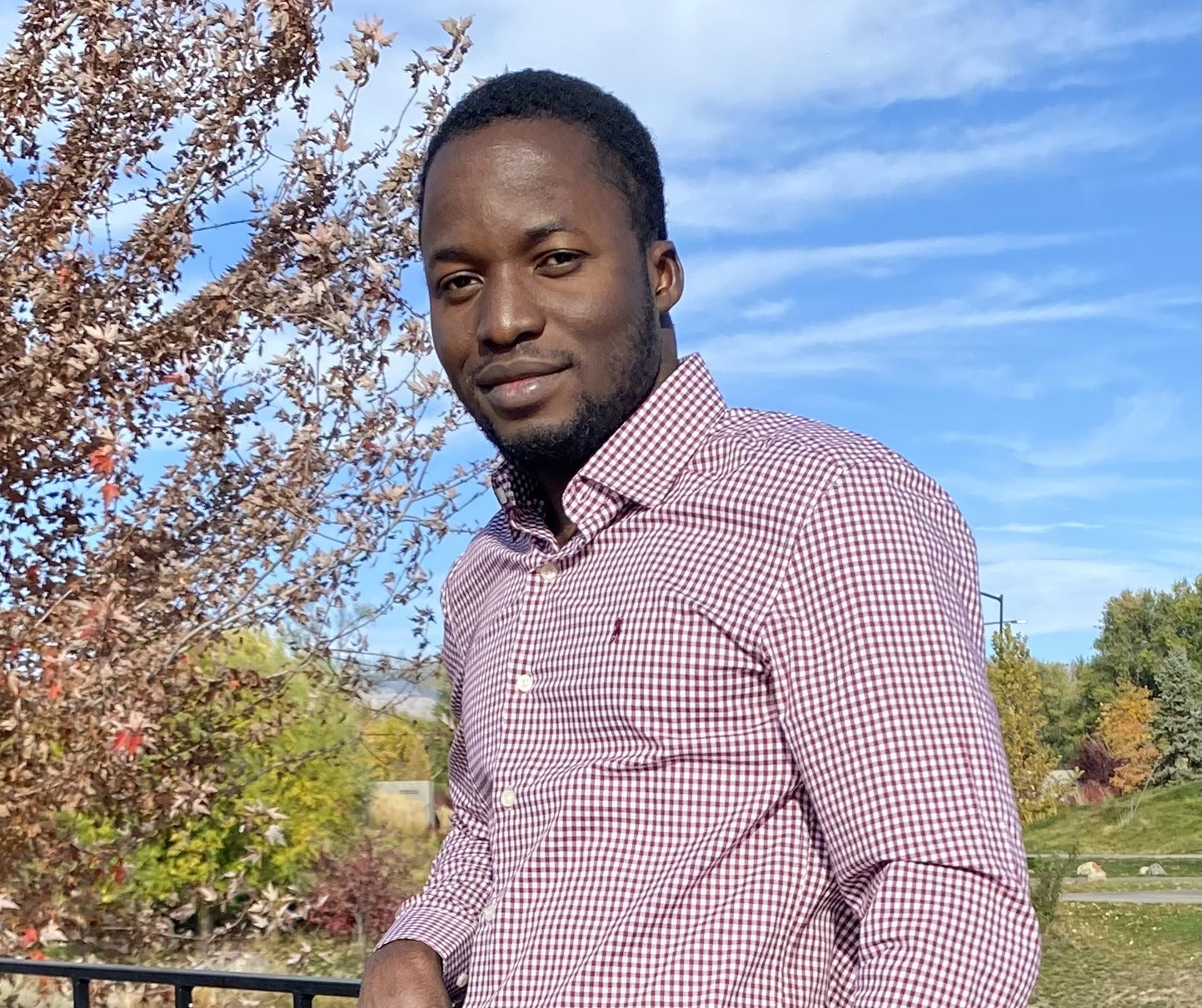Glaciers, sea ice, and hurricanes are not things that most people who live in land-locked Idaho think about often, but Computing Ph.D. student Yao Gahounzo does. Gahounzo joined Boise State’s Computing Ph.D. program in the Fall of 2020 after meeting Dr. Jodi Mead, who guest lectured for Gahounzo’s Master’s degree program at the African Institute of Mathematical Sciences (AIMS-Rwanda). Since joining the program, Yao has been working on climate model research with his advisor Dr. Michal Kopera. Their research is focused on glacier melting in Greenland caused by the warming of the oceans.

Gahounzo became interested in climate modeling during his Master’s research where he studied the increase in the number and impact of cyclones on the southwest coast of the Indian Ocean. “In recent years, there have been an increase in natural phenomena such as hurricanes, cyclones, and floods globally.” Gahounzo explains, “By modeling these phenomena, we can determine the timing, behavior, and impact of hurricanes. Ice modeling can give us a picture of how melting glaciers are impacting sea levels. The rising sea levels and warming of the atmosphere create more frequent coastal and tropical storms. We can use these models to provide policymakers and stakeholders with solutions that are evidence-based for better global outcomes.”
Gahounzo was accepted to the Parallel Computing Summer Research Internship program at Los Alamos National Laboratory (LANL) in New Mexico. During the internship, he will be working with the computational physics group under the supervision of Dr. Mark Petersen and Dr. Giacomo Capodaglio.
Gahounzo will be researching the comparison of B-grid and C-grid formulations for the sea ice dynamics on MPAS-Seaice. MPAS, or the Model for Prediction Across Scale, is a tool for creating simulations used in climate and weather studies.
“I used MPAS during my master’s thesis to run atmospheric simulations, but this internship is an excellent opportunity for me to work on the MPAS model and grid formulations for its sea ice dynamics core. It is an opportunity to explore different numerical methods used in ocean modeling.” Gahounzo anticipates enjoying the numerical and coding aspects of this internship project. “It will contribute to my Ph.D. research, and as a young ocean modeler, it will prepare me for my future career.”
In addition to being selected for the internship at LANL, Ghaounzo recently won an award for Best Student Poster at the SIAM Pacific Northwest Biennial Meeting. Check out Yao’s poster on Convection modeling of ice-ocean interaction.
Gahounzo is currently developing an “ice-ocean interaction component in the Non-hydrostatic Unified Model of the Ocean (NUMO) using the discontinuous Galerkin method” under the supervision of his Ph.D. Advisor Dr. Michal Kopera. Gahounzo has not seen sea Ice in person yet, “Emphasis on the “yet.” I am looking forward to the day that I do.”